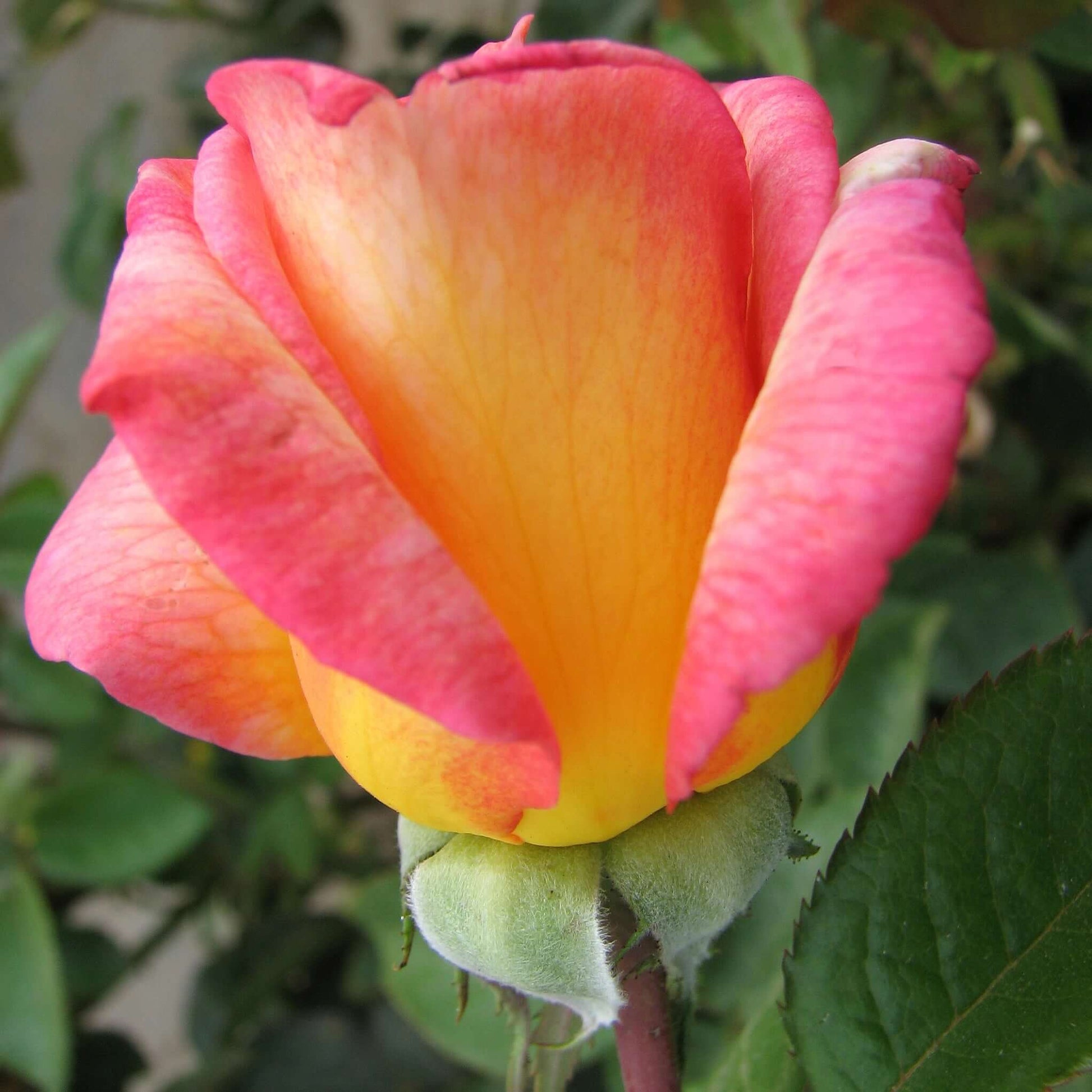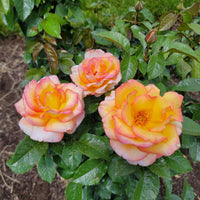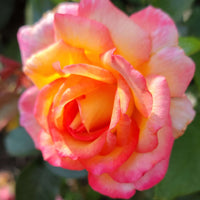





Extra 20% Off SITEWIDE
Copy the coupon and use it at checkout:
GARDEN20
Rosa 'Sheila's Perfume' is a stunning and fragrant floribunda rose, cherished for its captivating scent, vibrant color, and disease-resistance. The striking flowers, predominantly golden yellow with cherry-pink edges, typically measure around 4 inches in diameter and have a petal count of 25-30. Celebrated for its very strong and complex fragrance, the scent combines spicy and fruity notes with classic rose undertones.
Easily mistaken for a hybrid tea rose due to its large, often solitary flowers, Sheila’s Perfume floribunda rose is a bushy, medium-sized shrub with dense, glossy, dark green foliage. The yellow-pink blended flowers bloom in flushes from late spring through fall. Cooler temperatures enhance the vibrancy of the color and the size of the blooms.
Floribunda roses produce multiple flowers per stem in clusters. The blooms are more numerous and usually smaller than those of hybrid tea roses. The plant is generally bushier and more compact compared to both grandiflora and hybrid tea roses.
How we Deliver Plants
By using our own fleet of vans and trucks, we're able to control quality and deliver right to your door.














